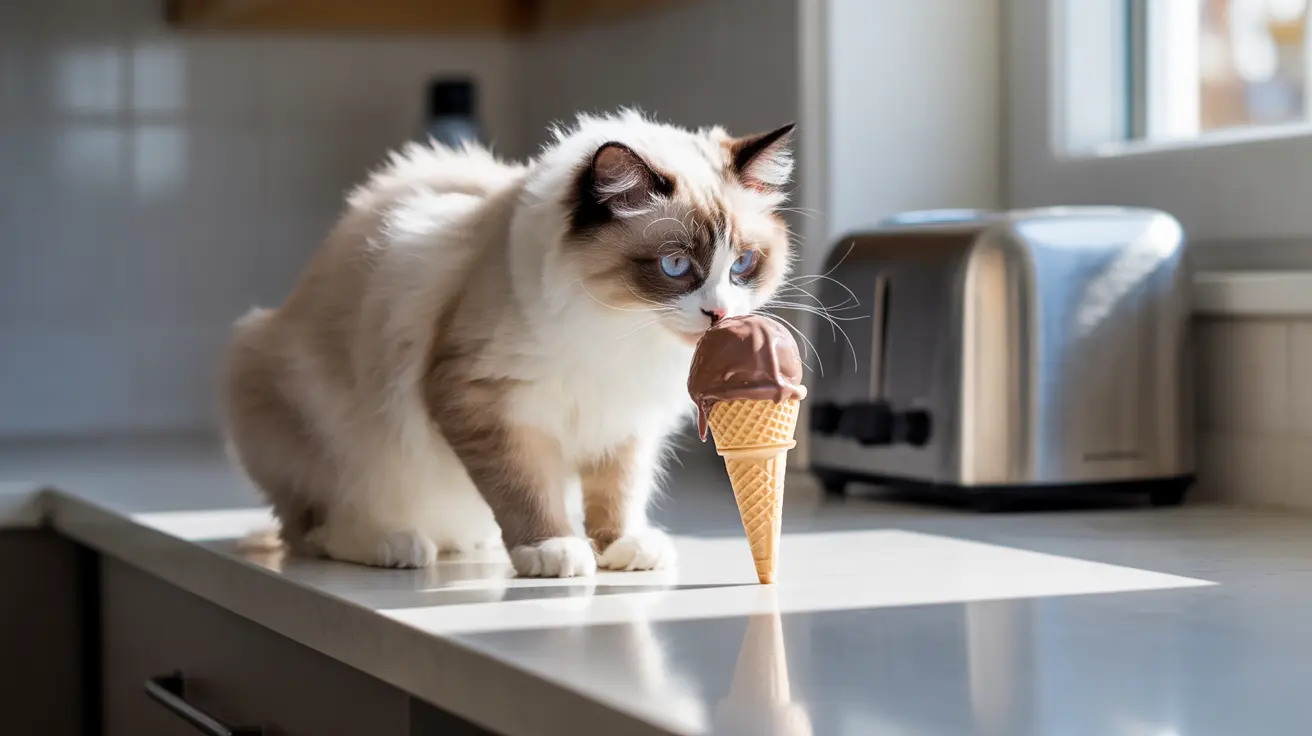If your cat has licked chocolate ice cream, you're right to be concerned. While a single lick might not cause severe issues in most cases, chocolate ice cream contains compounds that can be toxic to cats. This comprehensive guide will help you understand the risks, recognize warning signs, and know exactly what steps to take if your feline friend gets into this dangerous treat.
Understanding the severity of chocolate ice cream consumption in cats requires knowing both the immediate and potential long-term risks. Let's explore everything you need to know about cats and chocolate ice cream, including when to seek emergency veterinary care.
Understanding the Dangers of Chocolate Ice Cream for Cats
Chocolate ice cream poses several significant risks to cats due to its ingredients. The primary concern is theobromine, a compound found in chocolate that cats metabolize much more slowly than humans. Even small amounts can build up to toxic levels in their system.
Additionally, chocolate ice cream contains caffeine, sugar, and dairy - all of which can cause various health issues in cats. The combination of these ingredients makes this dessert particularly dangerous for our feline companions.
Key Toxic Components That Affect Cats
The two main toxic compounds in chocolate ice cream that affect cats are:
- Theobromine: The primary toxic component that can cause severe nervous system and cardiovascular issues
- Caffeine: Acts as a stimulant and can cause dangerous elevation in heart rate and blood pressure
Recognizing Symptoms of Chocolate Ice Cream Poisoning
After a cat consumes chocolate ice cream, symptoms typically appear within 1-12 hours. Watch for:
- Vomiting and diarrhea
- Increased thirst and urination
- Restlessness or hyperactivity
- Rapid breathing or panting
- Muscle tremors
- Irregular heart rhythm
Severity Based on Consumption Amount
The severity of symptoms depends largely on how much chocolate ice cream your cat consumed:
- Single lick: Usually causes minimal to no symptoms
- Multiple licks: May cause mild gastrointestinal upset
- Larger amounts: Can lead to serious toxicity requiring immediate veterinary attention
Immediate Steps to Take After Consumption
If your cat has consumed chocolate ice cream, follow these steps:
- Determine the amount consumed
- Note the time of consumption
- Contact your veterinarian or pet poison control
- Monitor your cat closely for symptoms
- Do not induce vomiting at home without veterinary guidance
Prevention and Safe Alternatives
To prevent future incidents:
- Store ice cream securely in closed freezers
- Clean up spills immediately
- Never intentionally share chocolate ice cream with cats
- Consider cat-specific frozen treats as alternatives
Treatment Options and Recovery
If veterinary care is needed, treatment may include:
- Activated charcoal to prevent further absorption
- IV fluid therapy for hydration
- Anti-nausea medication
- Cardiac monitoring in severe cases
- Supportive care until symptoms resolve
Frequently Asked Questions
Is it dangerous if my cat licked chocolate ice cream?
While a single lick of chocolate ice cream typically isn't life-threatening, it can still cause digestive upset. The level of danger depends on the amount consumed and the type of chocolate used in the ice cream. Always monitor your cat for symptoms and contact your vet if concerned.
What symptoms should I watch for if my cat eats chocolate ice cream?
Watch for vomiting, diarrhea, increased thirst, restlessness, rapid breathing, muscle tremors, and irregular heart rhythm. If you notice any of these symptoms, contact your veterinarian immediately.
How much chocolate ice cream can cause poisoning in cats?
Even small amounts can be problematic, but severity depends on the chocolate concentration and the cat's size. As little as 20 mg of theobromine per kilogram of body weight can cause toxic effects in cats.
What should I do if my cat licks or eats chocolate ice cream?
Contact your veterinarian or pet poison control immediately, note the amount consumed and time of consumption, and monitor your cat closely for symptoms. Don't try to induce vomiting without professional guidance.
Are there safer alternatives to chocolate ice cream for treating my cat?
Yes, there are many cat-safe frozen treats available, including specially formulated cat ice cream that doesn't contain harmful ingredients. Always choose treats specifically made for cats, and consult with your veterinarian about safe options.






